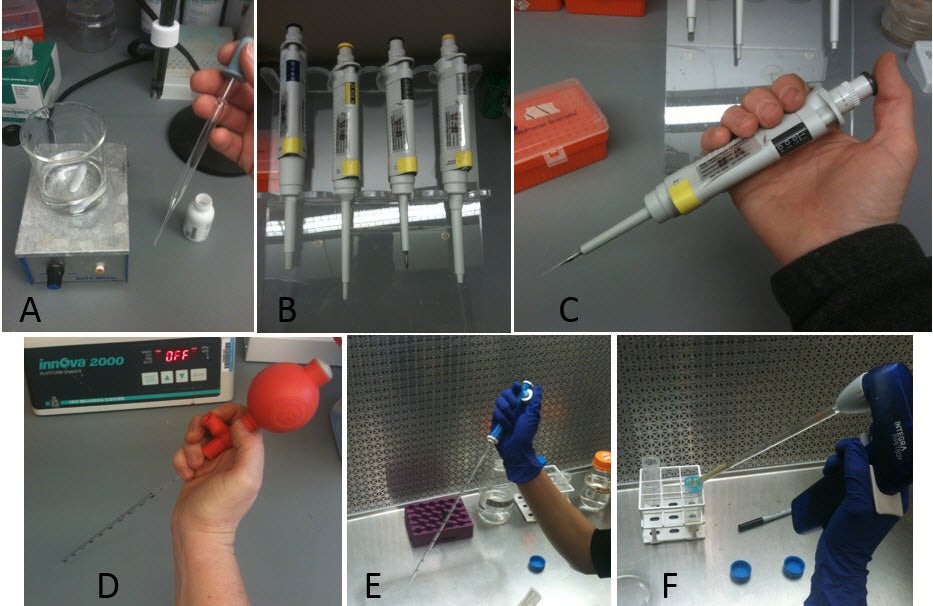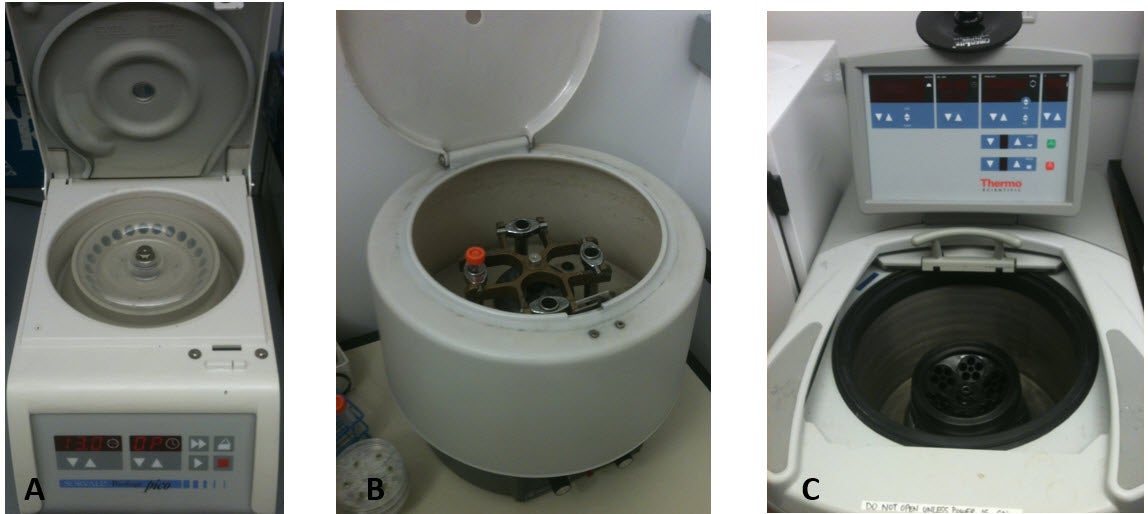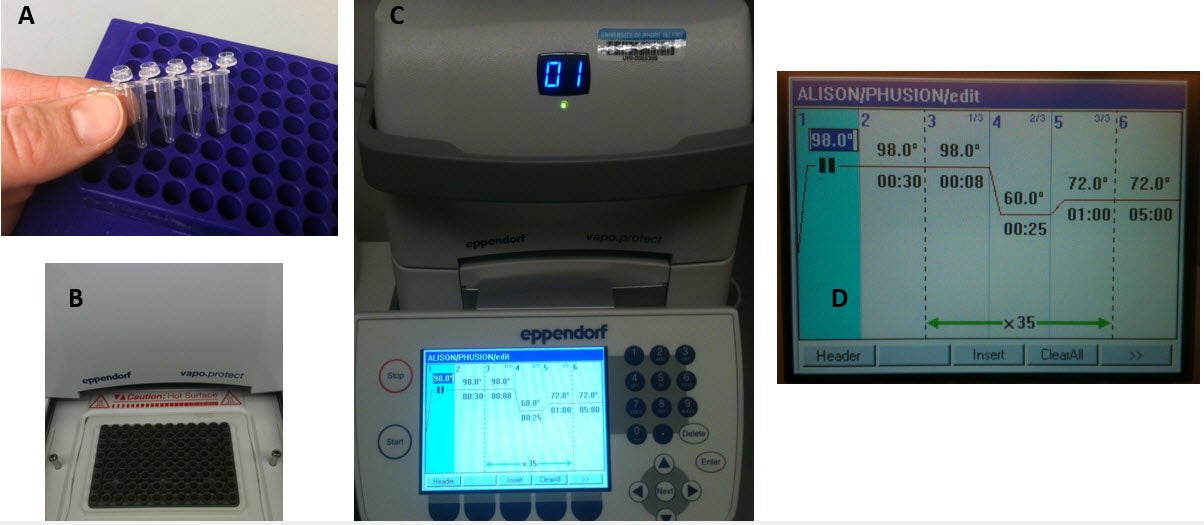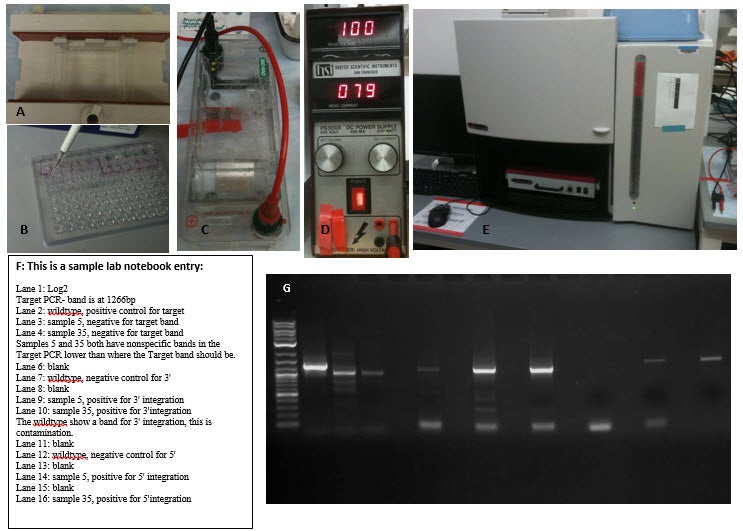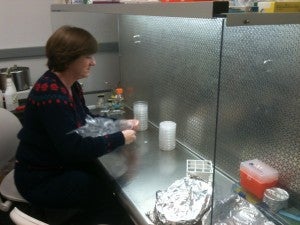Welcome to the lab! On this page, you have a chance to learn more about the tools of the trade that you would use to conduct the experiments performed in our lab. Use the list below to jump to a topic on this page:
A pipette is a tool used for measuring and transferring liquids. There are several different types for different applications. Below you can see a transfer pipet (Image A), micropipetters (Images B and C), and serological pipettes (Images D, E and F). The transfer pipette (Image A) is usually only used for transfer of somewhat small volumes when precise measurement is not needed, such as adding a few drops of base as you adjust the pH of a solution that you are making. The micropipette (Image B) is one of the most commonly used tools in the lab and is used when very precise, small volume measurement is needed. We have a number of micropipetts, each with a specific volume range (Image C). The ranges include 0.5 μl (microliters) to 2.5 μl, 2 μl to 20 μl, 20 μls to 200 μl, and 200 μl to 1000 μl. If one needs to measure and transfer volumes between 1 mL and 10 mL, serological pipette might be used. There are several devices which can be used with serological pipettes, including those seen in images D, E, and F. For measuring and transferring larger volumes than this we would use a graduated cylinder.
Here is a great video about using a micropipetter from NC Community Colleges:
 Home
Home Browse
Browse Close
Close Events
Events Maps
Maps Email
Email Brightspace
Brightspace eCampus
eCampus



